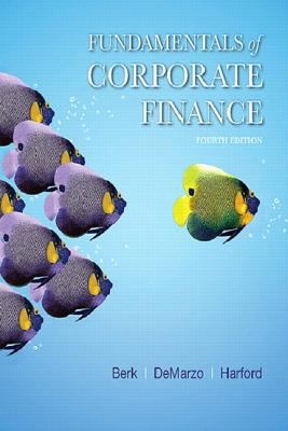You are a senior financial analyst with IBM in its capital budgeting division. IBM is considering expanding
Question:
You are a senior financial analyst with IBM in its capital budgeting division. IBM is considering expanding in Australia due to its positive business atmosphere and cultural similarities to the United States.
The new facility would require an initial investment in fixed assets of $5 billion Australian and an additional capital investment of 3% would be required each year in years 1–4. All capital investments would be depreciated straight line over the five years that the facility would operate. First-year revenues from the facility are expected to be $6 billion Australian and grow at 10% per year. Cost of goods sold would be 40% of revenue; the other operating expenses would amount to 12% of revenue. Net working capital requirements would be 11% of sales and would be required the year prior to the actual revenues. All net working capital would be recovered at the end of the fifth year. Assume that the tax rates are the same in the two countries, that the two markets are internationally integrated, and that the cash flow uncertainty of the project is uncorrelated with changes in the exchange rate. Your team manager wants you to determine the NPV of the project in U.S. dollars using a cost of capital of 12%.
1. Go to the NASDAQ Web site.
a. Enter the stock symbol for IBM (IBM) in one of the boxes and click “Summary Quotes.”
b. Click “Income Statement” on the left, place the cursor inside the statement and right click. Select “Export to Microsoft Excel” from the menu. If this option does not appear, then copy and paste the information.
2. Obtain exchange rates and comparable interest rates for Australia at Bloomberg’s Web site (www.bloomberg.com).
a. Place the cursor on “Markets” and click “Currencies from the drop-down menu.
Copy the “AUD_USD” exchange rate (the U.S. dollars per Australian dollar) from the table and paste it into the same spreadsheet as the IBM Income Statement.
b. Go to www.investing.com, click “Markets,” then click “World Markets,” and select Australia from the drop-down menu. Click “Bonds” at the top of the “Australia Indices” panel to get the interest rates for Australia. Copy and paste the data into Excel.
c. Go to www.investing.com, click “Markets,” then click “United States.” Click
“Bonds” at the top of the “United States Indices” panel to get the interest rates for the United States. Copy and paste the data into Excel.
3. You may have noticed that the four-year rate is not available at www.investing.com for the U.S. Treasury. To find an estimate of the four-year yield, calculate the average of the three and five-year yields.
4. In your Excel spreadsheet, create a new worksheet with a timeline for the project’s expected cash flows.
a. Compute the tax rate as the four-year average of IBM’s annual income tax divided by annual earnings before tax.
b. Determine the expected free cash flows of the project.
5. Note that the free cash flows you calculated in Question 4 are in Australian dollars.
Use Eq. 23.2 to determine the forward exchange rates for each of the five years of the project. Then use the forward rates to convert the cash flows to U.S. dollars.
6. Compute the NPV of the project in U.S. dollars using the 12% required return given by your team manager.
Step by Step Answer:

Fundamentals Of Corporate Finance
ISBN: 9780134475561
4th Edition
Authors: Jonathan Berk, Peter DeMarzo, Jarrad Harford





